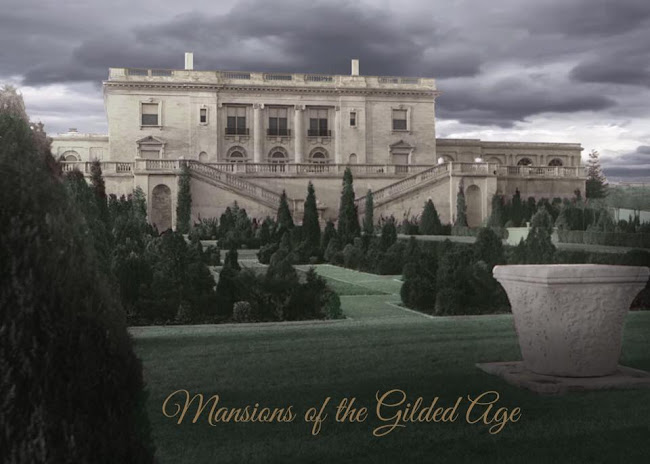
"I have sometimes thought that a woman's nature is like a great house full of rooms: there is the hall, through which everyone passes in going in and out; the drawing room, where one receives formal visits; the sitting room, where members of the families come and go as they list; but beyond that, far beyond are other rooms, the handles of whose doors are never turned; no one knows the way to them, no one knows whither they lead; and in the innermost room, the holy of holies, the soul sits alone and waits for a footstep that never comes."
This has always been a favorite passage of mine, from a short story by Edith Wharton, " The Fullness of Life". One can read many things into this, but I sometimes think it applies so well to large " Gilded Age " houses and what they meant! Yes, they were for impression and displays of wealth and power, but they were also homes, and many times the owners had cozy little corners where they could just be themselves. There was a story I once heard where the lady of a great house, a woman of society, while gowned in all of the best that Paris couturiers could create, had a little room, where she sewed little dresses and ribbons to relax. Would love to hear what others might think about what this passage could mean?








2 comments:
To me, it seems as if she equates levels of social intimacy with that of a well-planned great house...
The large drawing rooms and ballrooms and halls where everyone can gather is her common space; she invites people in, but only so far. They see great architecture and priceless works of art, however private mementoes and memories are out of sight. This is where she speaks "how do you do" and "lovely to see you." Only she knows that her most private self is found on the floor above. Party guests roam around the main floor, harldy ever venturing up to the private sector.
Upstairs, there is the bedroom, boudoir, dressing room, and sitting room. Visitors are forbidden. Family members are allowed... after a knock on the door and the proper "come in." She may let her guard down and embrace her motherly and wifely emotions. These spaces are smaller than the public rooms, more intimate, more cozy. The lady's inner circle of familiars are all that see inside. Her own self is shown on the walls and on the tabletops... art depicting her own children, small gifts from her husband, a framed picture of her parents.
Beyond the lady's private suite is her own private room, a cocoon of small proportions. Maybe it is known as "the studio" or "the reading room" or "the writing room" or maybe just as "own room." She practices her hobbies that might include sewing, needlepoint, reading, writing a diary. It is her own hideaway in a whirling world of society and etiquette where she can literally let her hair down. Her private journals and diaries are kept in a locked drawer. Her thoughts and feelings are in the innermost of innermost rooms of the house. Maybe her husband visits.. maybe not. Maybe "the soul sits alone waiting for the footstep that never comes;" The footstep of the person that knows what it is like to be her...
Just some ramblings... I hope they make sense...
Yes, I like your interpretation.
Post a Comment